Let's say the IXTA02N250HV MOSFET regulates high voltage in a common-gate topology. The resistive load in the source is very light and allows an output current of just tens of μA.
The MOSFET's datasheet defines the breakdown voltage BVdss @ Id = 250 μA. Can I assume that if the resistors in the source are such that they limit the current to tens of μA, then the MOSFET is safe because the voltage will never reach the breakdown voltage? Is this assumption true for quick dynamic pulses too? Meaning a TVS would not be needed to protect the MOSFET.
The input would be 6 kV into the drain, the output would be the source with output voltage 1 kV to 5 kV. So yes, I was wrong in my description, it is not common-gate. And the input voltage is too high for one MOSFET, I would actually like to use three in series (cascode); I did not mention this to make the question more simple. I was thinking of transient pulses, such as when the input power gets connected, or when the MOSFETs turn on one by one.
Edit: Below is the schematic of the idea. The input current into the optocouple comes from the feedback and its value regulates the output voltage. As I don't have the IXTA02N250HV model, I'm using different MOSFETs.
The diode's datasheet is on https://fscdn.rohm.com/en/products/databook/datasheet-nrnd/discrete/diode/zener/tdztr10-e.pdf
